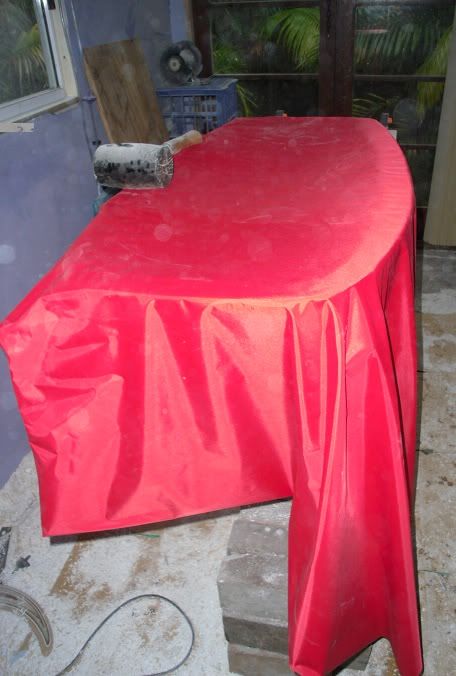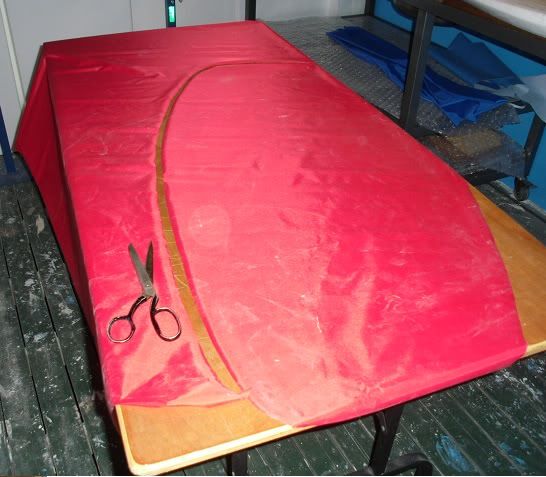

Any solid craft displaces water even when its skimming and the impact of every ripple against a solid hull adds to the drag.
So...... Im testing a new design with a solid deck, ultra thin rails and a hull made of 70 Denier ripstop fabric.
Initial testing shows that low inflation gives a smooth ride and the pliability of the fabric lets the hull slip over the ripples rather than impact into them. I havent done any GPS runs yet.
I initially made a few bodyboards to test the idea in the surf and on some waves it builds up to a certain speed and then takes off with a great burst of speed so thats why Im trying it on a windsurfer.Could be barking up the wrong tree but its worth a try.
Anyone else tried this ?
Yoyo had the opposite idea, a solid bottom and a blow up deck.
Be interesting to see how it goes, my instinct is that it will be slower, but I'm prepared to be proven wrong.
This video isnt me but the last minute shows how fast an unpowered inflatable hull can be.
Check out from 10:26. No sails, no fins, I think its faster than a solid hull could go on the same wave.
Dam he really picks up some speed in the end.
Its possible as instead of the force of ripples going into pushing the board up and backwards they would be allowed to travel (to a certain extent) under the board.
Any decrease in energy dissipation due to the board action should make it faster.
Depends how much extra drag is created due to having more surface area in contact with the water.
I've had daydreams about doing this as well.
A couple of years ago at corros I sailed a mate's board that was very delaminated on the bottom, and it was like a magic carpet ride -- very smooth, felt amazing! I didn't notice any increase in speed but as I hadn't sailed the board pre-delam I wouldn't be able to say whether or not it's quicker.
Sounds like a good idea to me anyway.
Good luck with it ![]()
there is a good reason RIB were invented. IB were slow. Putting a rigid bottom on it improved the efficiency out of sight. Anyone who has rowed out to a yacht in an inflatable boat will tell you...it's a hell of a lot easier in a solid hull.
The bodyboard prototypes show promise and I want to be fairly sure Im heading in the right direction before I take a jigsaw to an old windsurfer.
From a bit of reading on the net Ive worked out that an inflatable hull minimises the contact area and dissipates the friction, it conforms to the water surface and because of its high bouyancy and low weight it doesnt need any more than mimimal nose rocker. Because of this it can be a lower profile shape that will lower form drag from wind resistance.
High inflation pressure gives rigidity to a surf mat but with the solid windsurfer deck and rails the board will be totally rigid but I can use a softer inflation pressure for the hull, it that will be faster across the water surface due to its pliability. The soft inflation will smooth out the chop.
Im going to do a few more test boards and then its on to the full size WS. The plan is to cut out the bottom skin and scoop out most of the EPS and then Vacbag / Epoxy glass the exposed foam and then add the fabric skin.
Heres a few of the proto bodyboard designs.
A carbon fibre twin pontoon hull version.





And an EPS foam / Innegra Perimeter design with fabric deck and hull.



yoyo, different idea behind a RIB with its displacement vee hull and rear power source Vs my idea with a planing hull and forward power thru the mast/sail.
Its easier to power a rigid craft from behind but easier to pull an inflatable from the front.
awesome to see you trying new things Ultimats.
You have me convinced that the concept has merit.
just a thought - on the windsurfer you may not need to do the entire hull.
maybe just the rear third or thereabouts where most of the water contact is when planing.
just a thought - no science or practical experience involved![]()
good luck with it!
"How can you minimise contact area whilst conforming to the water surface. Surely this increases contact area, in turn increasing drag."
Hi Redbussurf, as best as I understand it, an inflatable hull will have the lowest surface area because it has the highest possible bouyancy right from the fabric thickness, it would also be lighter than a solid hull board so as it planes it has a higher bouyancy and lesser weight than a standard board and therefore... would have less displacement/contact.
When i meant 'conforming' I didnt mean sticking to the water, I meant to say that as it skims across the surface and contacts ripples and chop the flexible hull would conform or change its shape to accept the chop rather than deflect it.
Standard hard hulls deflect the millions of little peaks of chop which adds to the drag constantly affecting the speed and ride. Im talking about all the chop thats a few inches high and less thats responsible for all the board shuddering.
Sorry for my inelegance with words, Ive only got about a 200 word vocabulary.![]()
I am thinking that the material used must have a high something of something..
Like a superball bounces higher because it does not dissipate much energy.
Like a formula board goes faster when sailed with stiff legs- no energy lost in knee joint flex.
More experimentation first- air inside is efficient but the base material probably needs unidirectional flex, ie up and down but not front to back.
Does a dolphin bounce well when dropped from a great height?
Latest test vehicle done!
Glueing the hull on.. 1 side done.

Test inflation.

About a 13mm trough between pontoons.

Total inflated nose rocker so the only contact with the water is by inflation.

Eevn the rails wont touch the water on a flat run.

Boardboy I reckon thats a great idea !, I dont know how much of the hull to change over but if youve got any theoretical ideas Im keen to listen !
I sailed a yacht that was designed in a similar way. Jim Ingliss built his yacht with the same concept. 38ft and a flexible plywood bottom. When planning downwind it would flex and "conform" as such to the waves. Couldn't say if it was faster or not than a stiff hull like the norm, but it went like sh## of a shovel. That was about 20 years ago. Haven't seen anything like it since.
I think it could have merrit to some degree. Let us know how it goes.
Fez
Ultimats, I love the idea, I really like people who try something different as that is where the breakthroughs come from. I did an interview with Stefano Basso about his wingsails which were getting a fair bit of stick on here when he posted about them.
The part where you say about deflecting the countless amounts of little chop, how do you see that an inflatable hull will act differently at speed? My concern would be that at speed the air would be forced to the back of the board deforming the shape of the inflatable part and creating greater air pressure so reducing the capability of conforming to the water......
Only tests will tell I guess. If you want to write a full article about it I would be happy to put it onto my website for you and help you with the writing part.
This was Stefano's, it required a lot of editing but I think it got his ideas across well..... www.redsurfbus.com/2011/09/wings-sails-innovative-design-by.html
Very impressive.
What is the material you are using? Hypalon? Do you have a layer also board side or are you confident your epoxy has no pin holes and you wont lose pressure.
What adhesive are you using to glue the skin to the board?
If nothing else you should have a softer ride.
Hi guys, Ive spent the last week testing the mini board and its going well, I usually ride a standard bodyboard in the surf so its a familiar environment for comparsion with the inflatable version.
The speed is equal or higher than a standard solid board, def not slower and apart from bursting the inflation valves in the surf Im keen to move onto the next version.
Ive also towed behind a tinny and theres a speed point where the board feels to be skimming on the tips of the ripples and leaving almost zero wake and Im 80 kgs.
Theres a lot of theoretical thinking to be done and reading to see if there are applicable examples to consider and youre input helps too...
redbussurf,
I think an inflatable hull at the right pressure has pliability to absorb minimal chop like wheat in a field yeilding to the wind and at speed it would have less resistance to acceleration and at a higher speed where the lift required in minimal, a flexi hull reduces the impact energy from running into thousands of little water peaks.
Im not clear what you mean about the "air being forced to the back of the board" but I think a fairly high pressure and a lightweight material will be the best combo.
Thank you for the offer of an article but my ideas change after each test run and I need to learn more before I open my mouth too far!
Decrepit,
I agree that the area to convert wont be the whole hull. Last week I thought it might be, but not now after the runs behind the tinny because I now know I can plane my 80 kg on 650 sq in of inflated fabric and its flying. So maybe just the back 3 foot or so ? and the air cushion only needs to be about 2 or 3 cms thick rather than a totally hollow board.
YoYo,
Im using PVC from an inflatable boat factory, its about 600 Denier, I was going to use Hypalon but I figured that a lighter material would be inherently more pliable. Ive got some 200 denier fabric from my local CLARK Rubber for the next board.
The hard deck part is about 3/4 in thick EPS so I laminated it with 3 layers of glass/ innegra and Carbon fibre for strength so Im sure its air tight.
The glues are from the boat factory too but I found their distributor in Sydney so I can source it cheaper. The inflatable hulls are a soft ride for sure and quieter.
Heres some pics of the new inflation valves...

Blue Nipples !

These valves are better because I can easily adjust the inflation while being towed to see how the ride is affected.
The new boards 1/2 finished and should be ready in a week or so but if I make a full size speed version I'd probably minimalise the board to reduce aerodynamic form drag too.
The glue is PA 5000 from 'PCA Barnham'.
I lost my last GPS a few months ago, whats the best one to buy now ??
Thanks decrepit, my last one was years old... I'll have a look at your suggestion as Im looking for a GPS that I can download data and overlay it onto maps and all the new apps.
Always looking for more info on board dynamics at speed..



Taken without permission from...


Just a bit more theory, for me Flat is Fastest when youre talking rocker, but if you inflate a fabric under a flat hull the fabric wont be flat.

SO the latest board has concave rocker in the tail so that when the fabric is inflated it forms a flat.

Its only a centimetres worth of concave.



Thanks Tony, same from me.
What chance to find such a similar history/personality amongst the 7 billion ?
See you on the beach again with our sons or maybe you'll test ride one of my prototypes ? My hydrofoiled boards are always available too !
So the latest one is almost ready, its glassed and I put in a simple inflation valve. I was going to get all techno and install a high pressure valve but the operating pressures are so low it only needs something simple.

The black lines are for deck contours on the next board.


Just needs a sanding and put the hull on. .. .... ....
Sanding sux, dust everywhere, soggy mask stuck over your mouth. Itchy. Thankfully I love doing it.
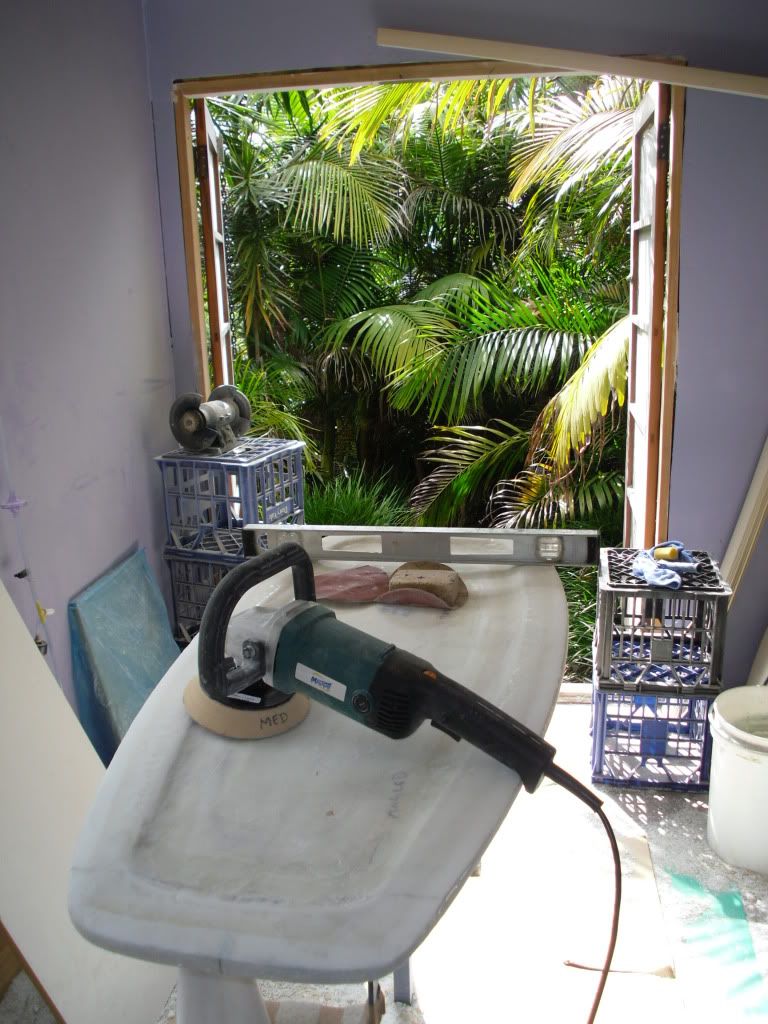
I like this board so I gave it a semi-gloss coat of epoxy with a 30% addition of DNA.
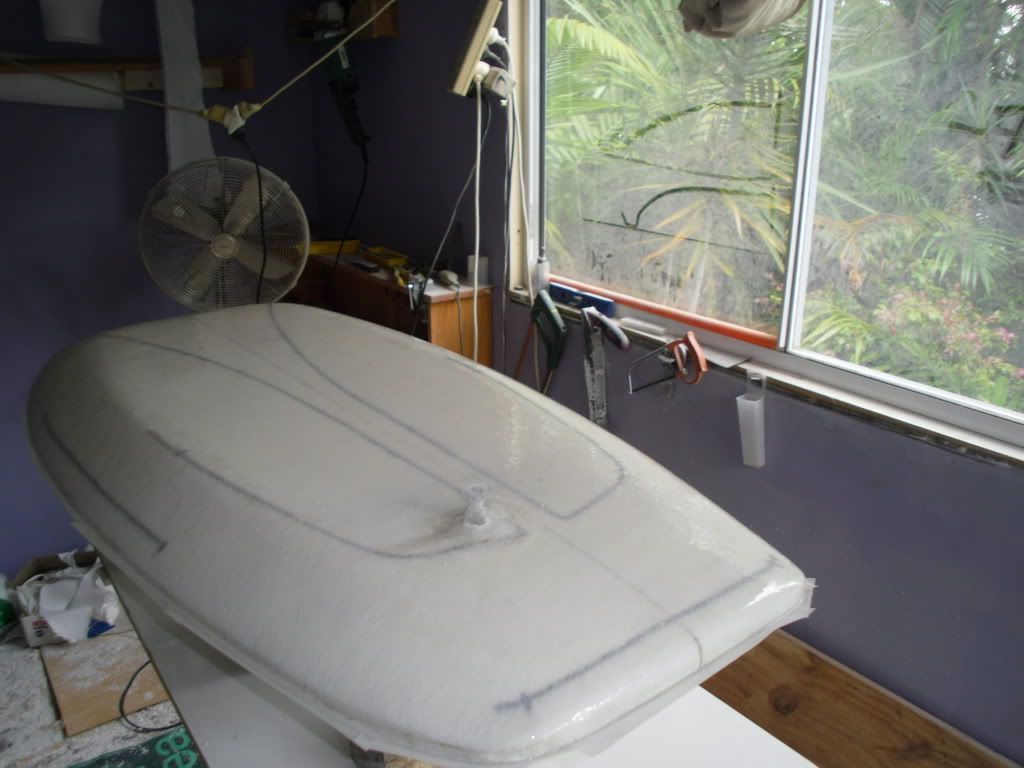
The rails are 12 mm square, low and all release.

Ive been testing the durability of the glue and the fabric with test patches left outside and its been 2 months and looking good. Also testing resin with f/glass, Innegra and Carbonfibre for later adding fins,plugs,straps etc.
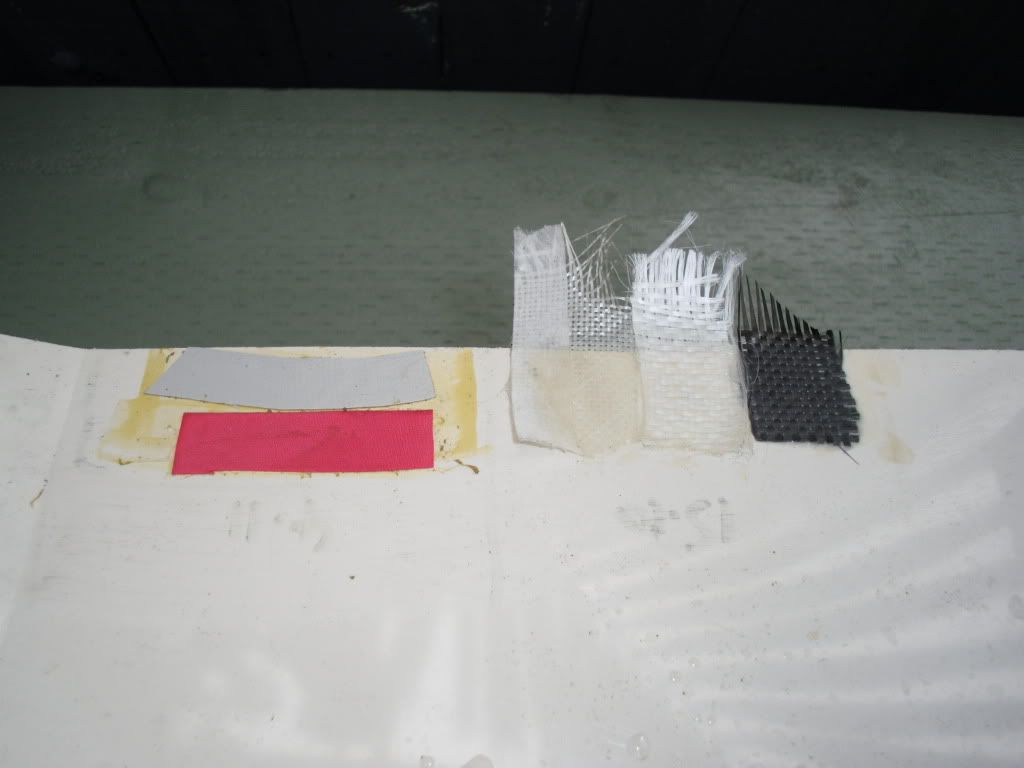
After all the guesswork, science and construction, Ive still got the biggest question to figure out..
Should I use the red or the blue material....
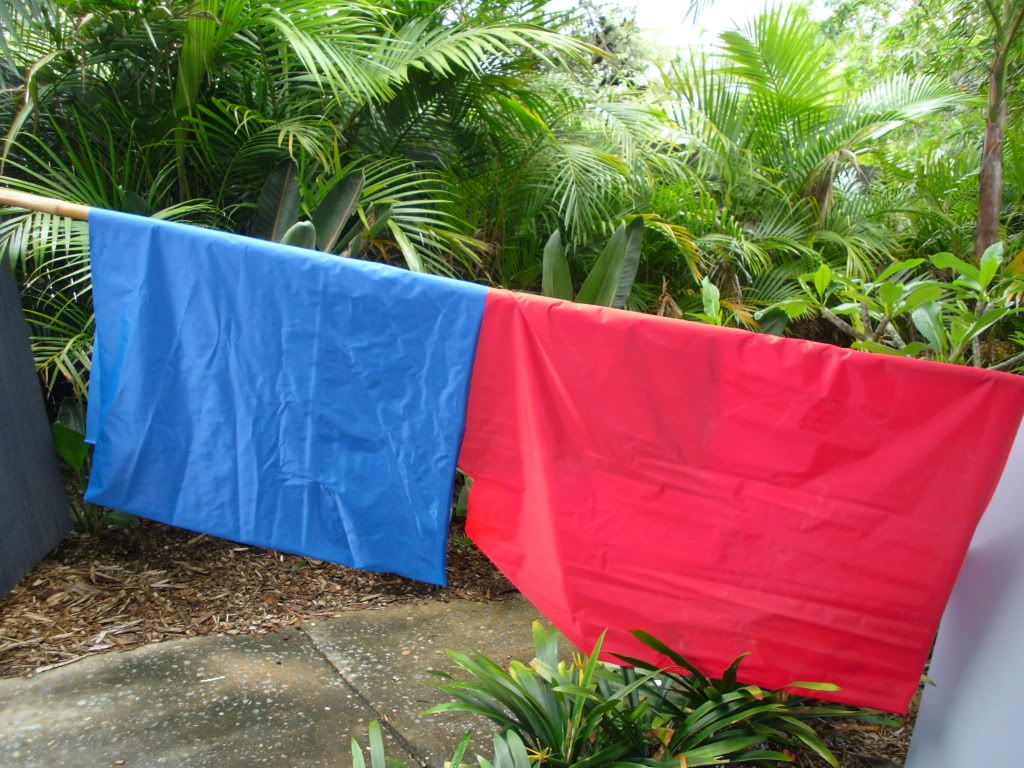
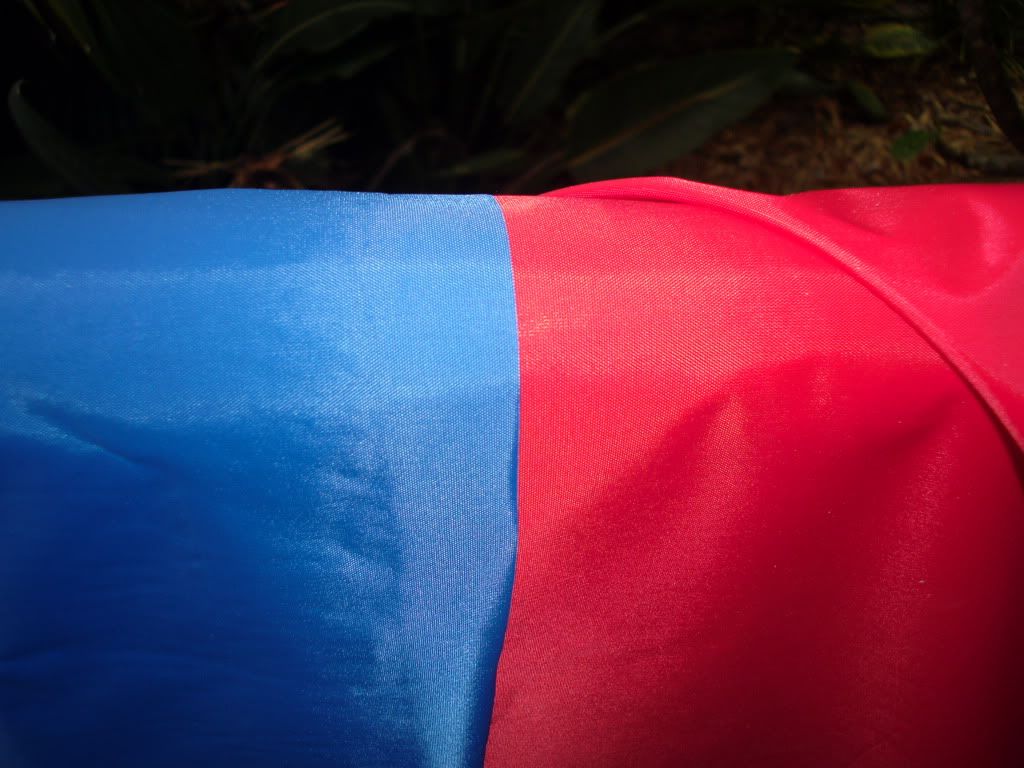
Which one ?
Is this the 200 denier stuff? Looks like nylon cloth on the outside, is there nylon on the inside as well or just PVC?
nebbian of course youre right !!! It has to be Red !
yoyo, its 200 denier, weave on one side, smooth on the other. Its sold as "nylon" but it also had a sticker indicating its 'Ripstop'.
IMHO the previous grey PVC was a bit stiff to be considered for later construction.
This red/blue material feels about a 1/4 the thickness of the grey.
How did your inflatable builds go ? What did you find out ?
Sanding done.
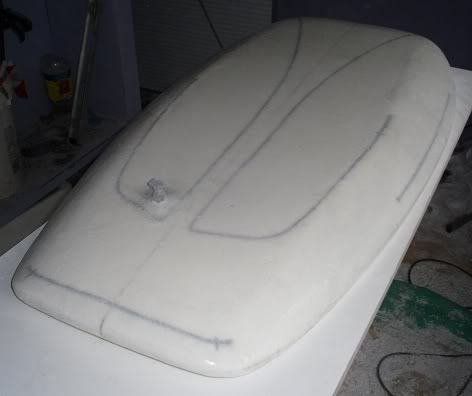
The undersides got glue lines / thickness and weight notations on it.

Fabric ready but I need less humid weather to do the glueing.
Theres always something to slow things down.
